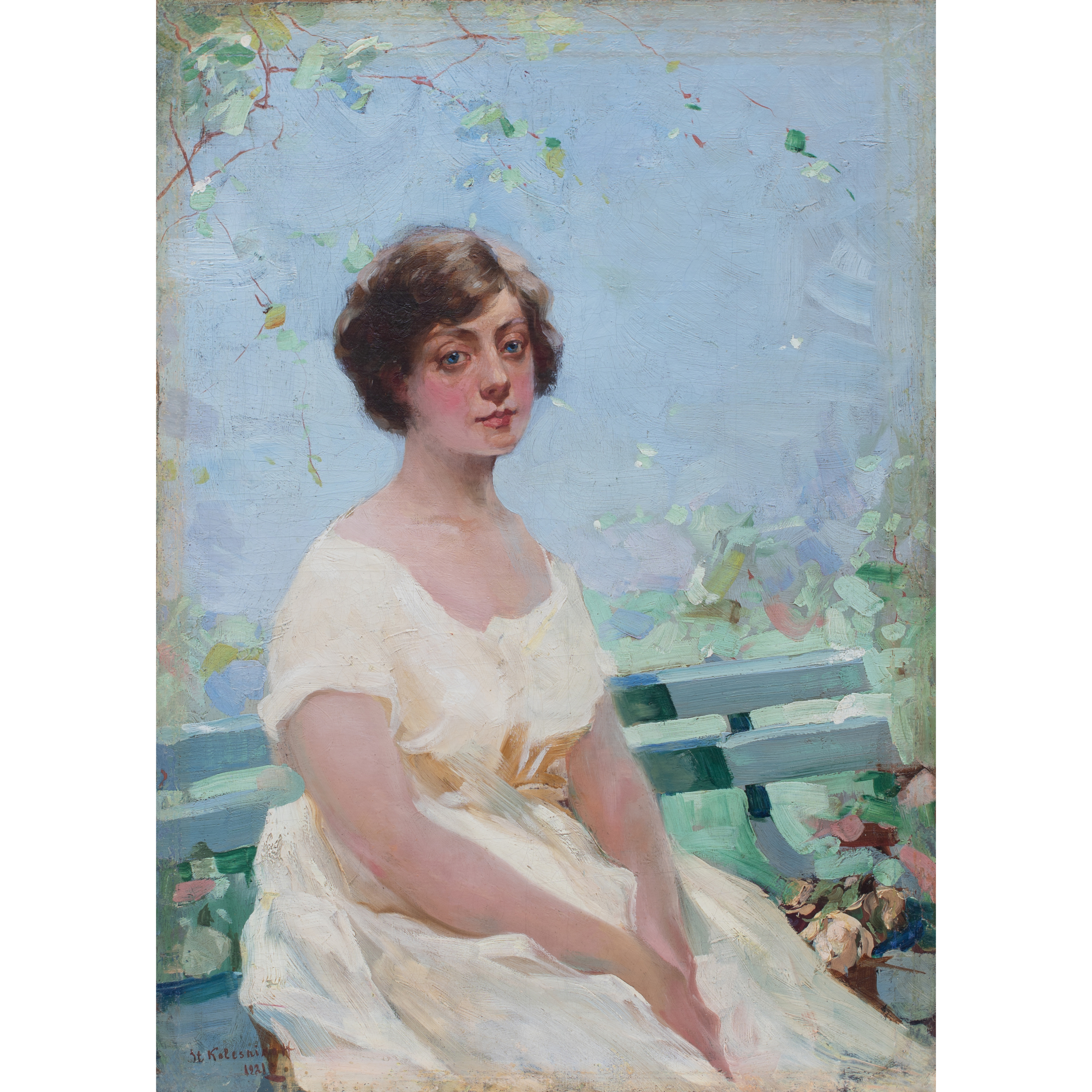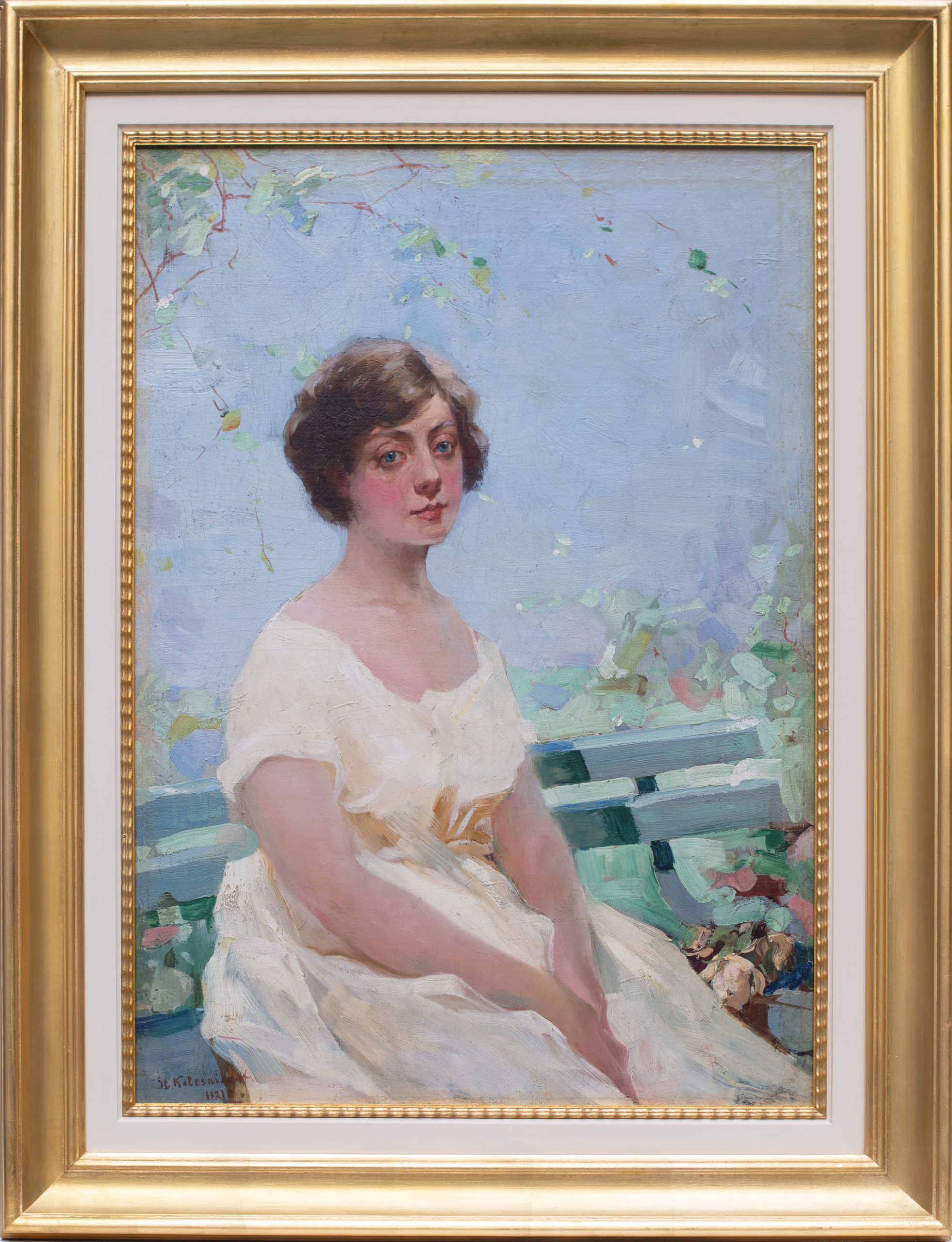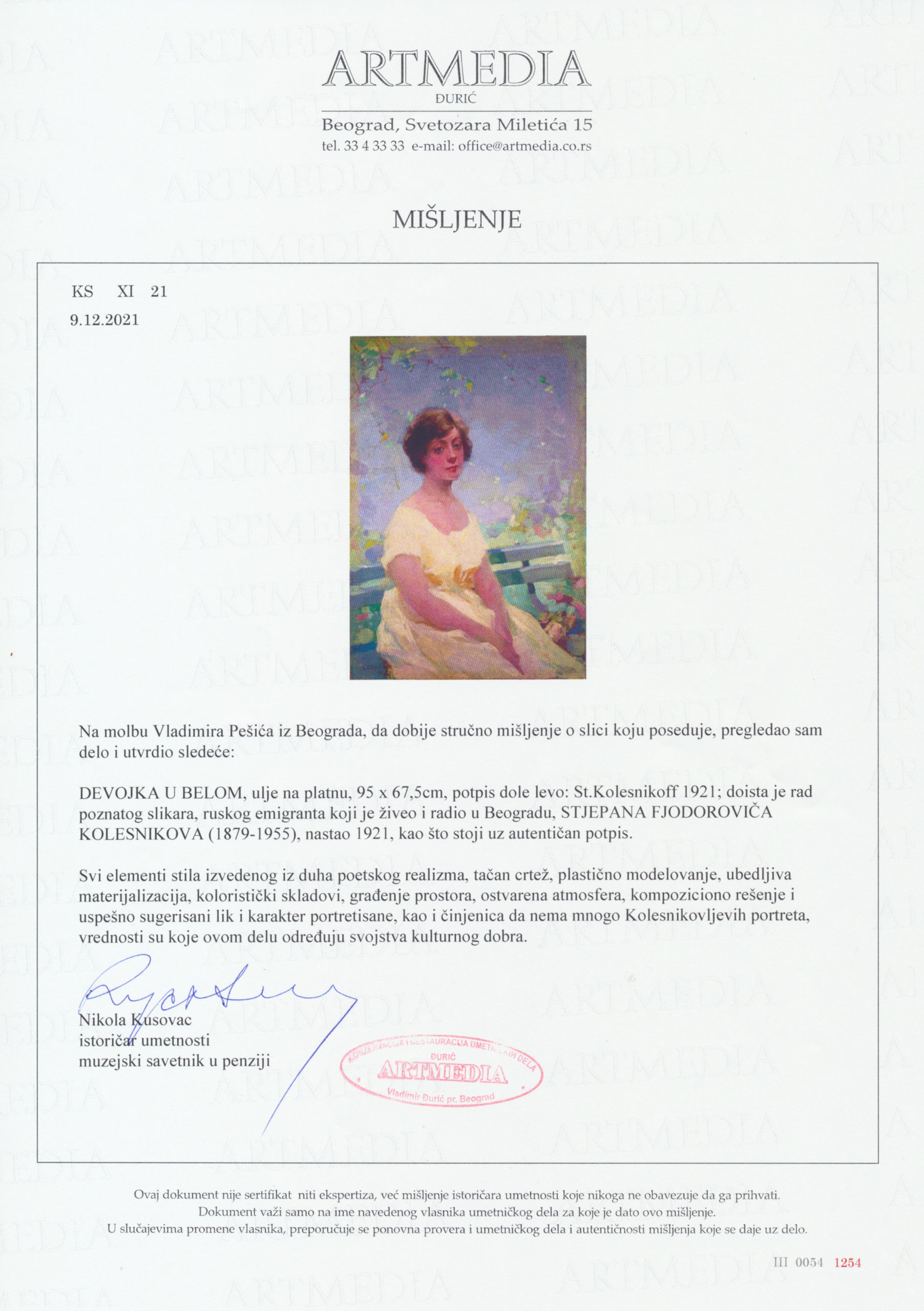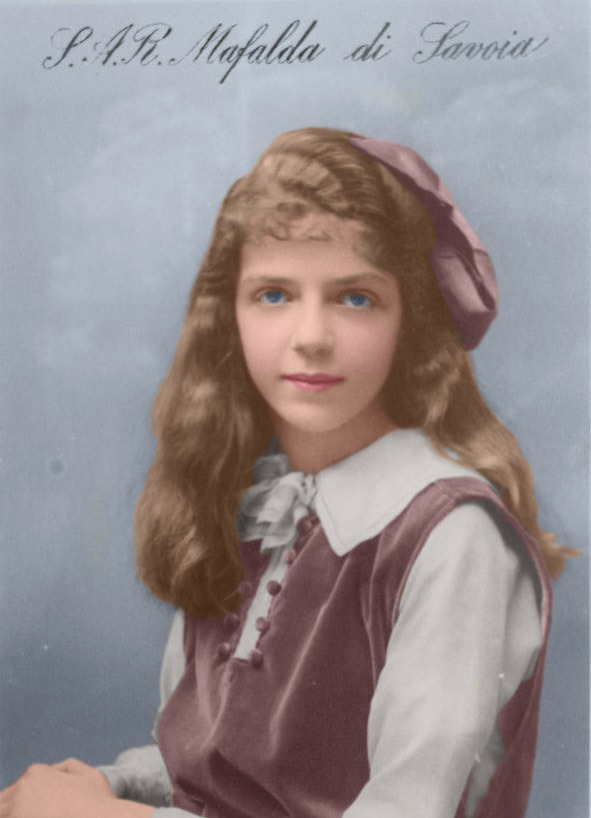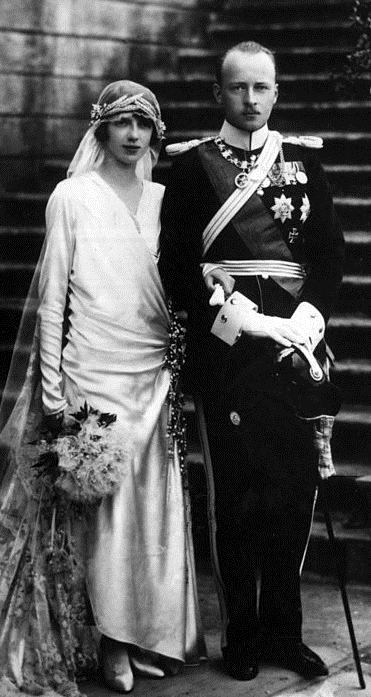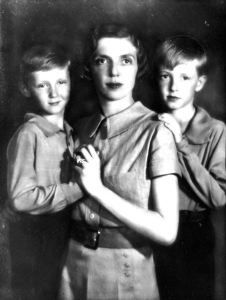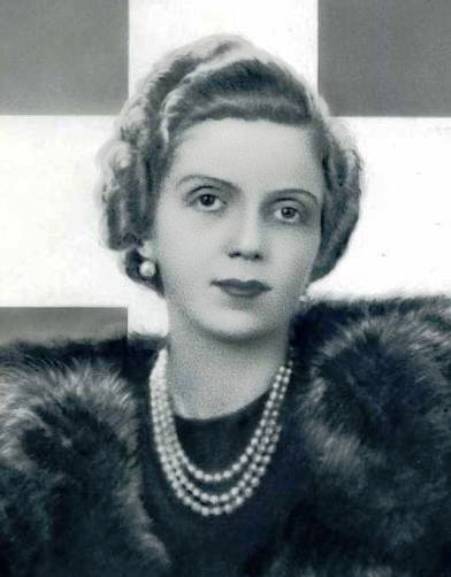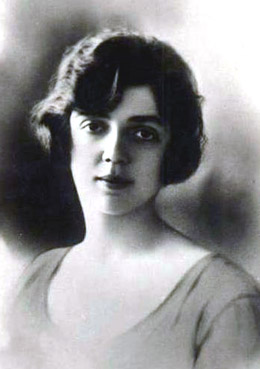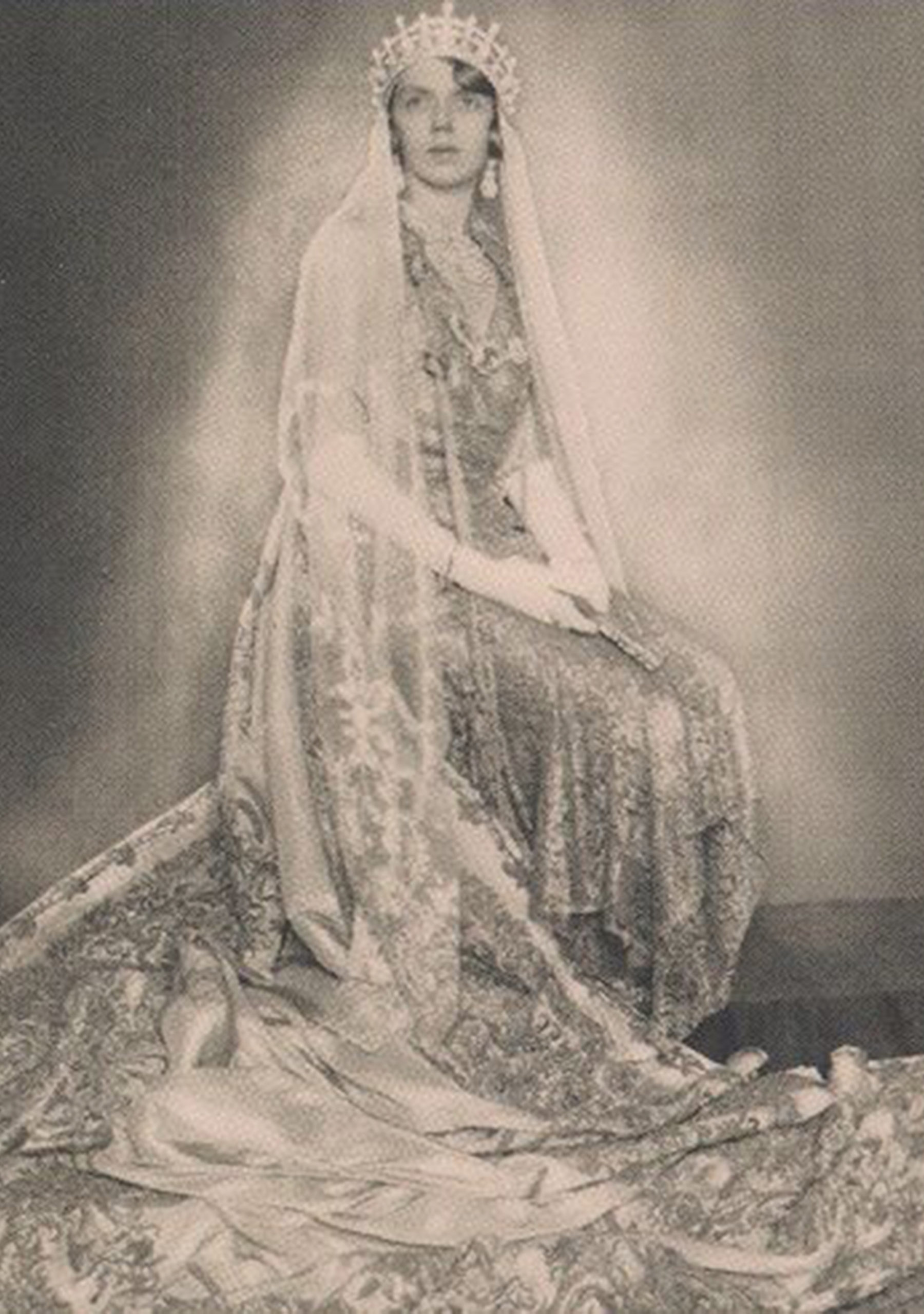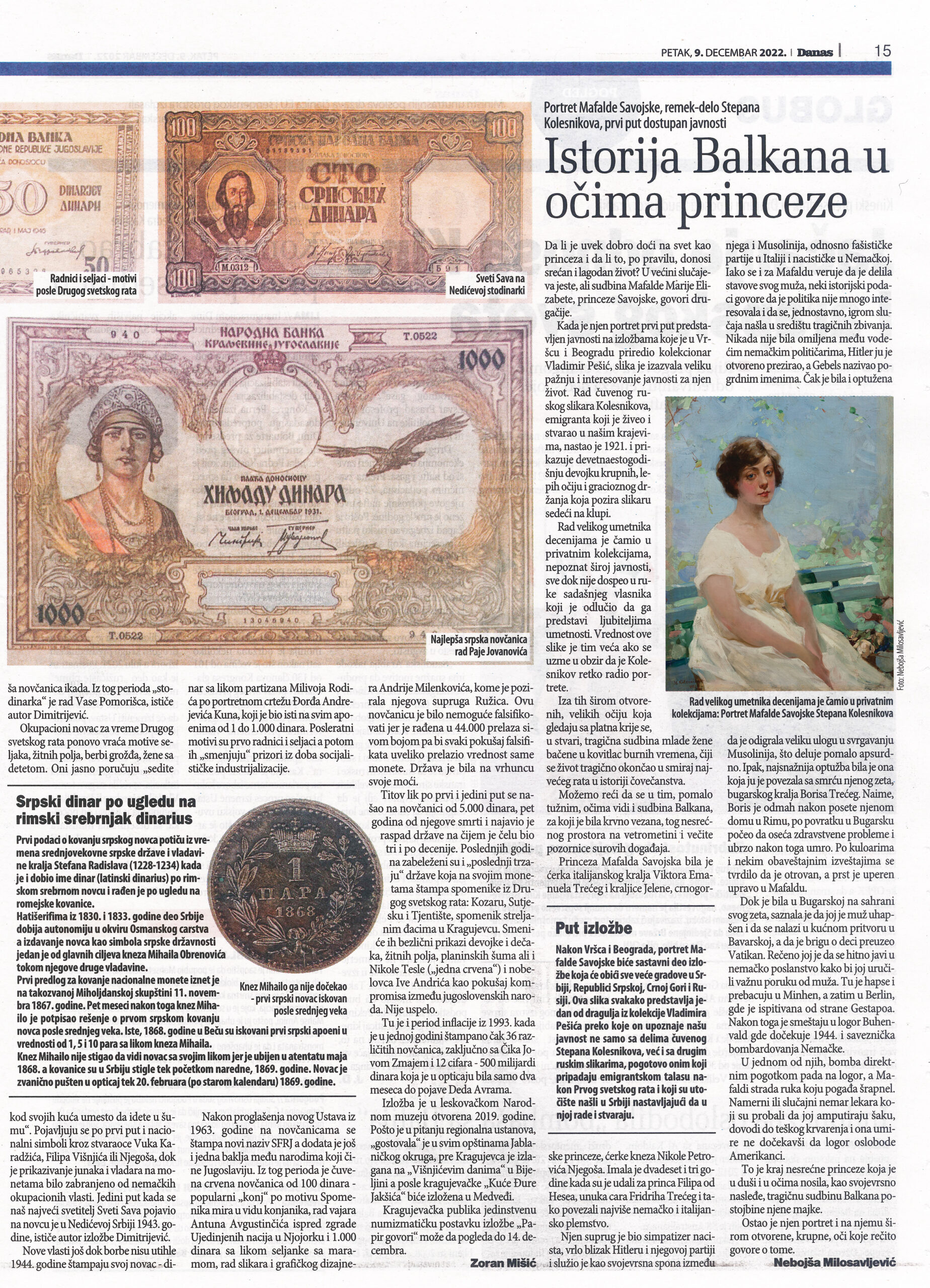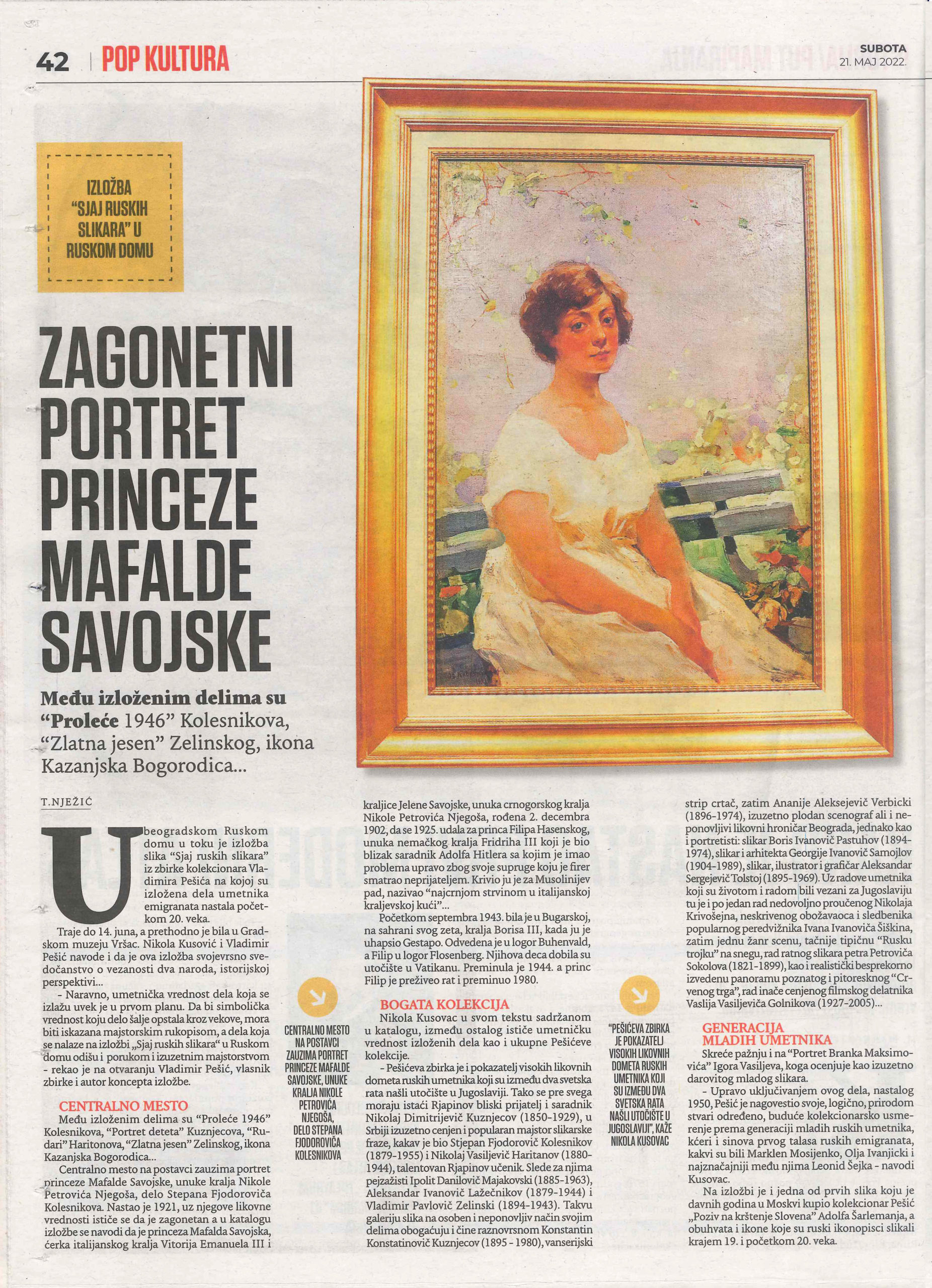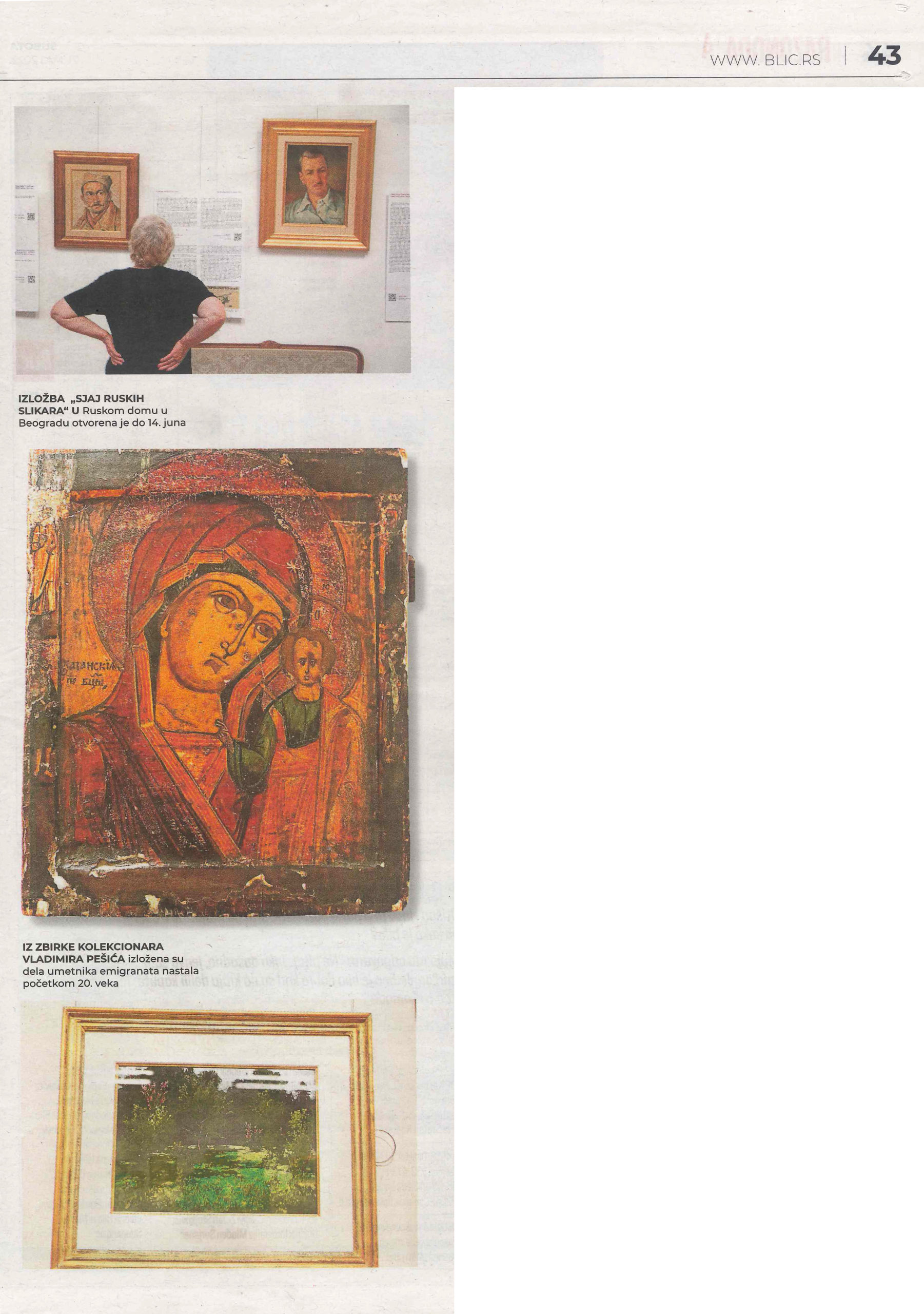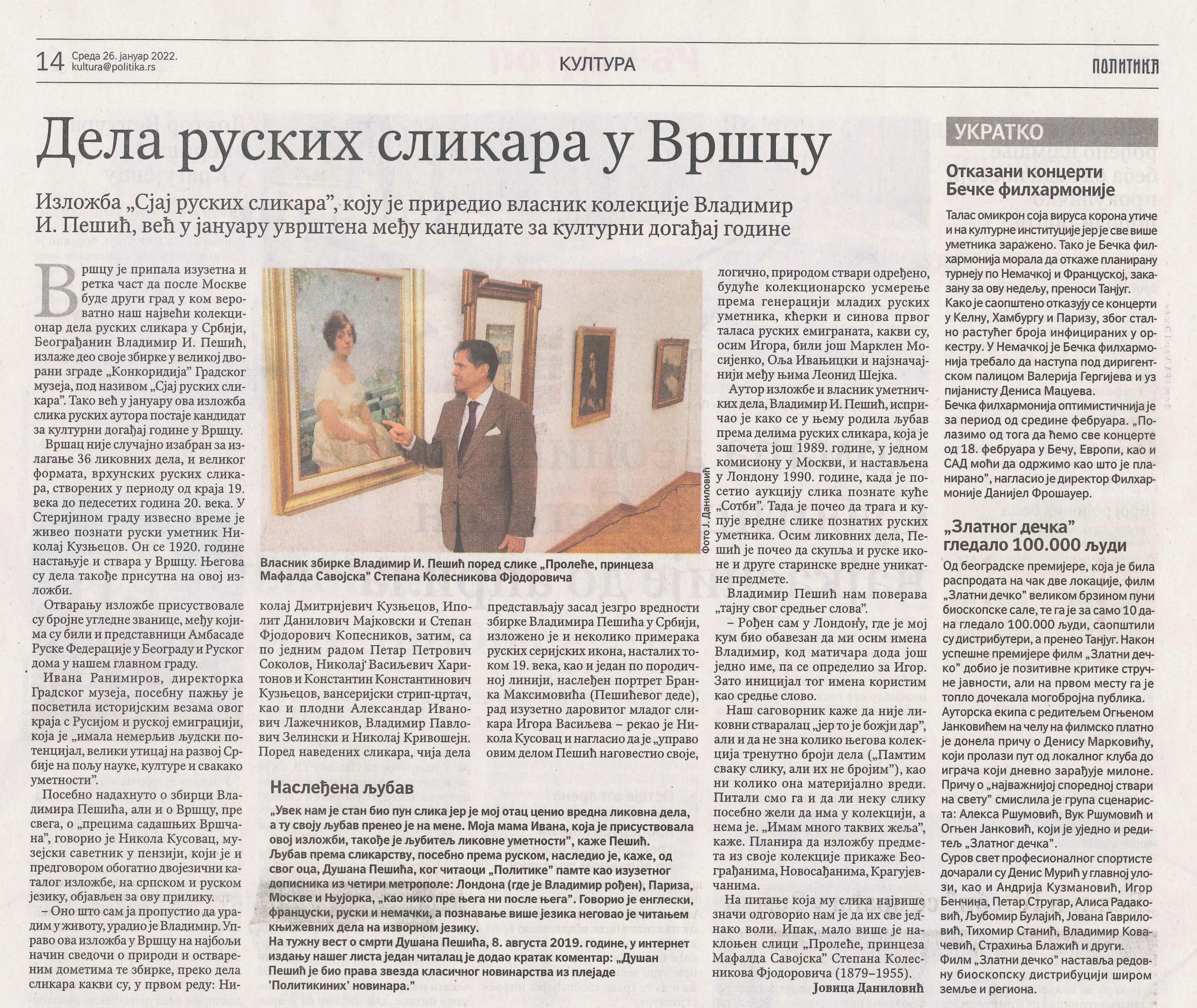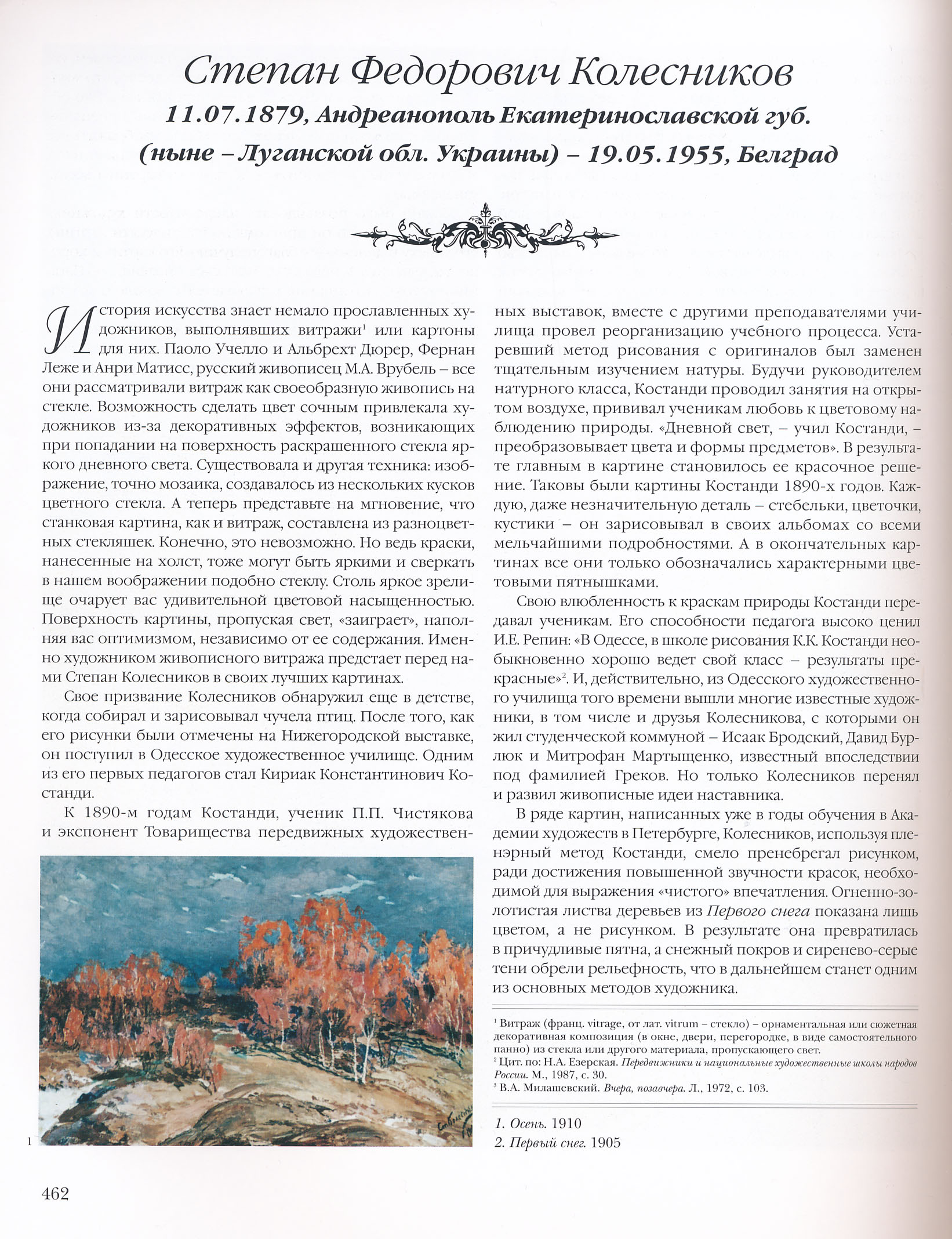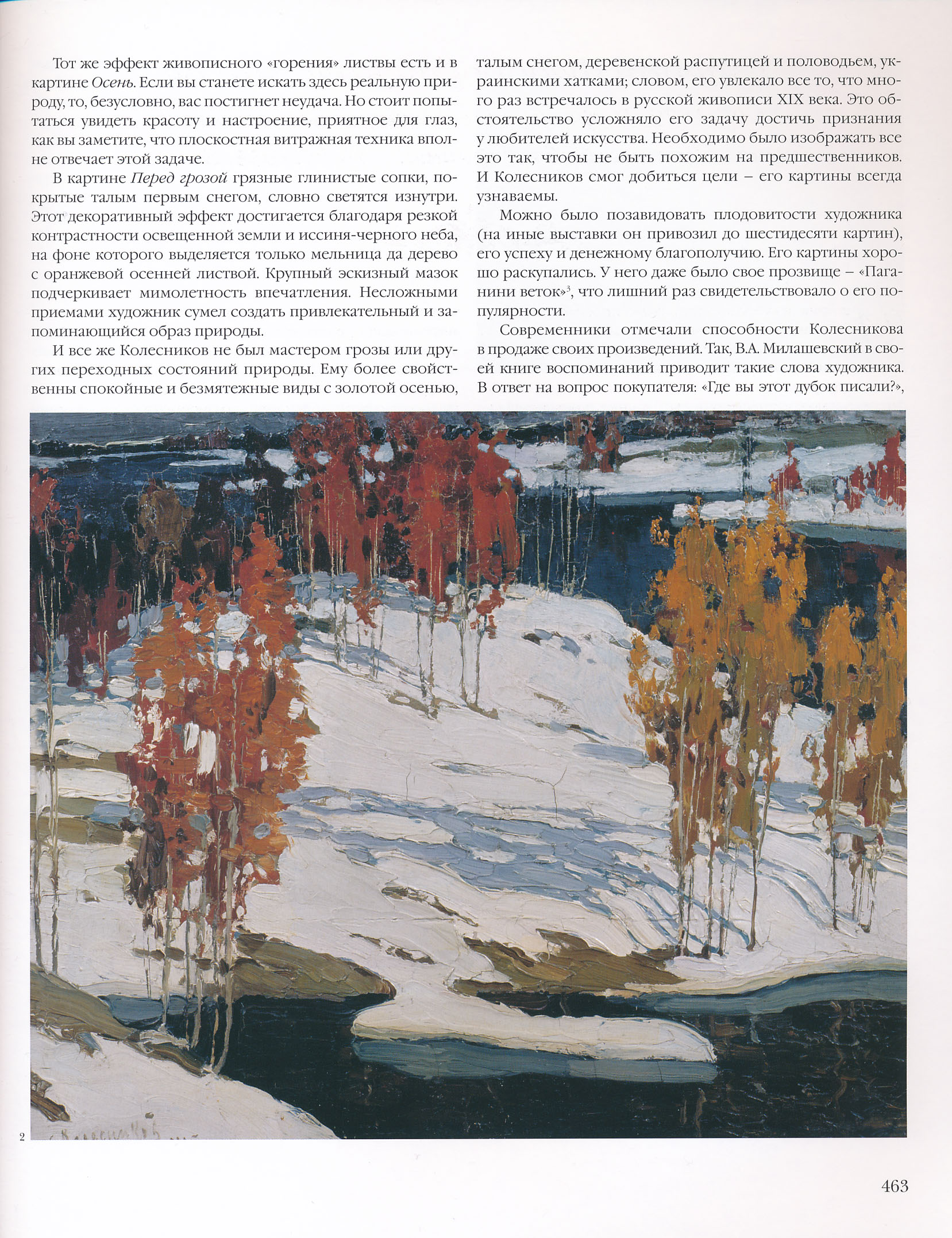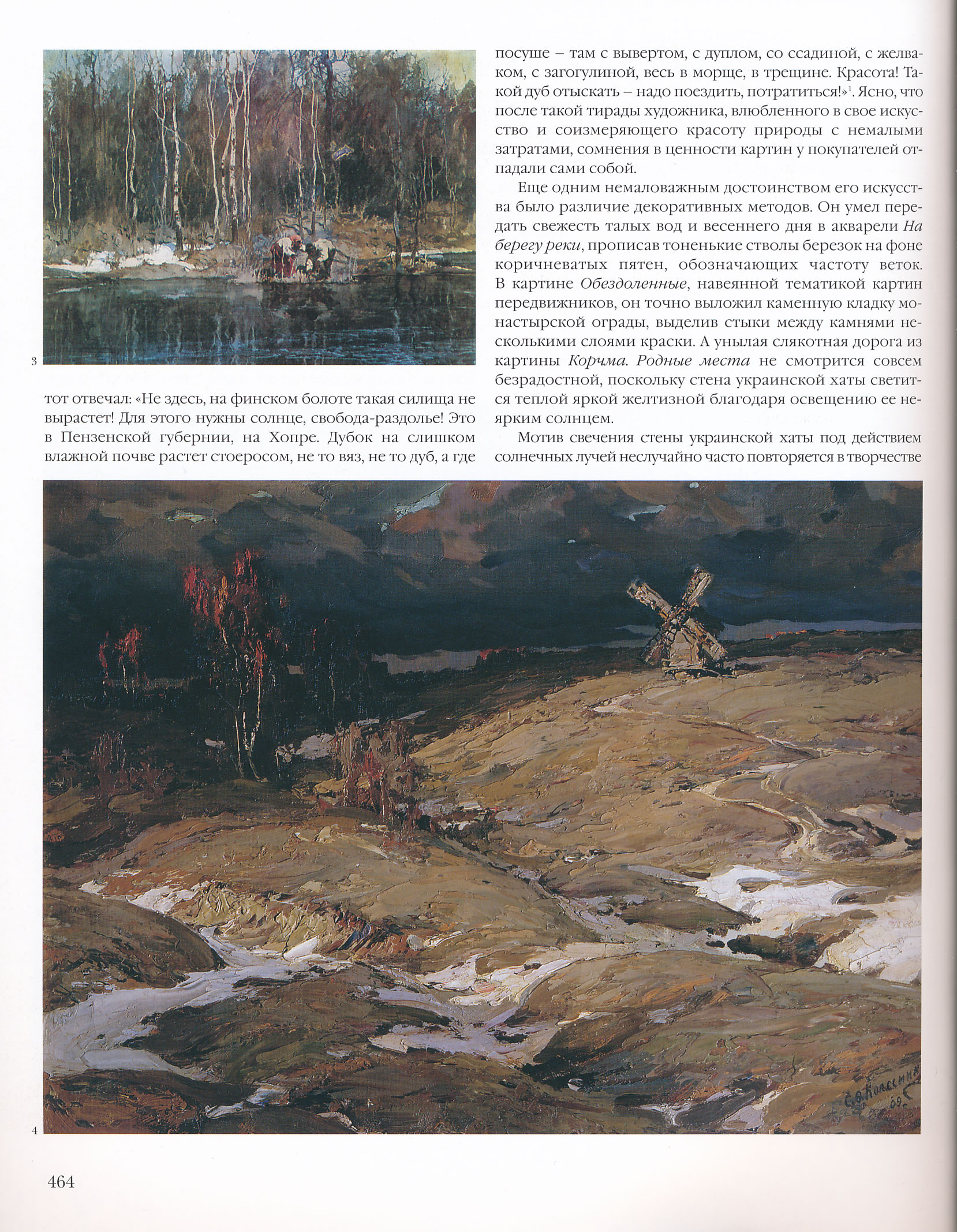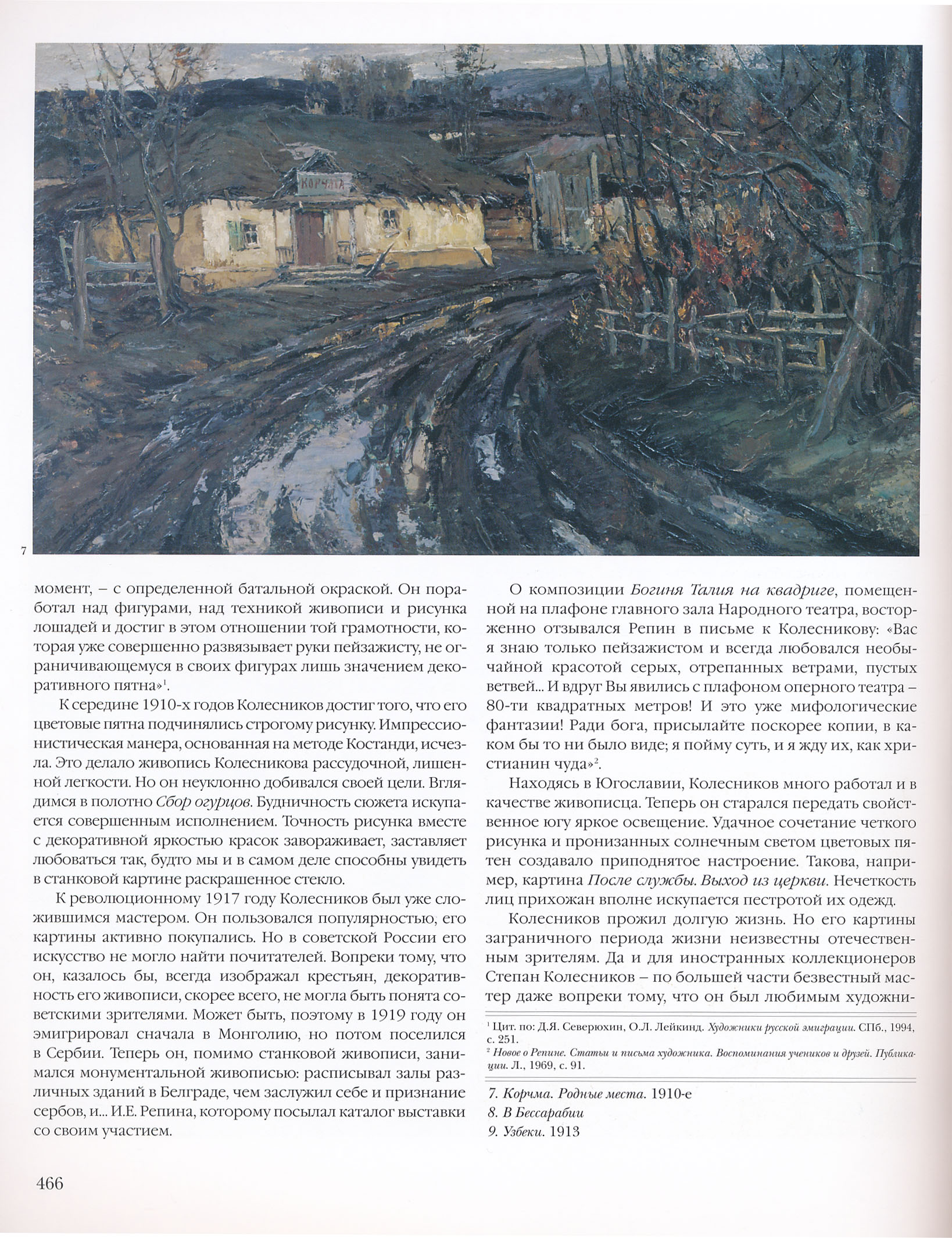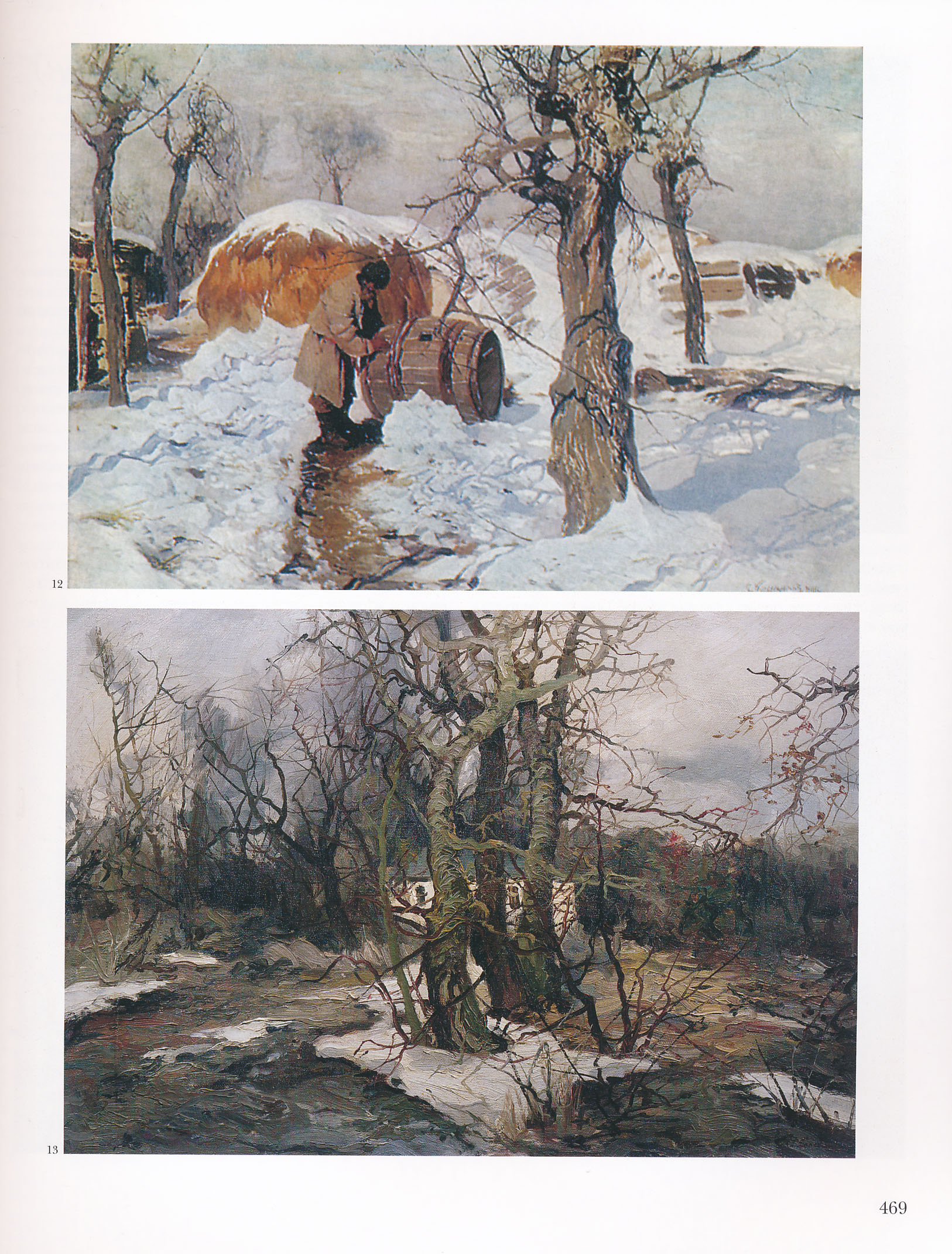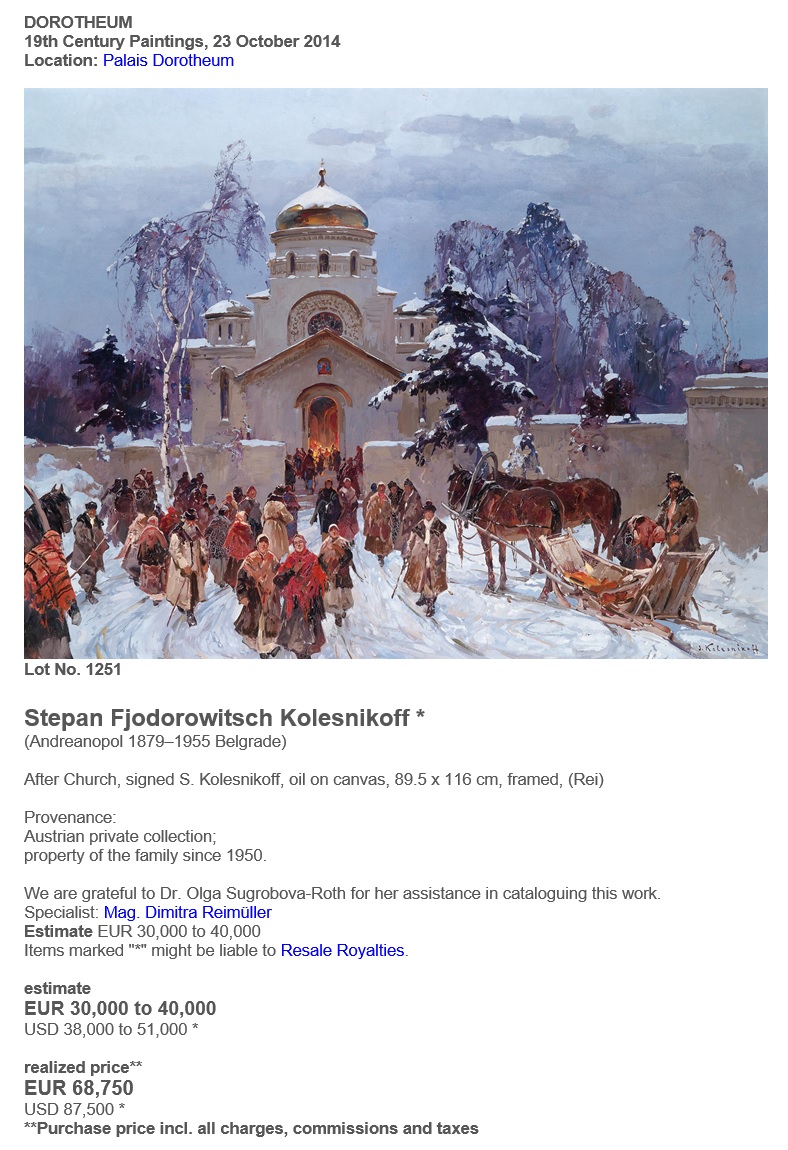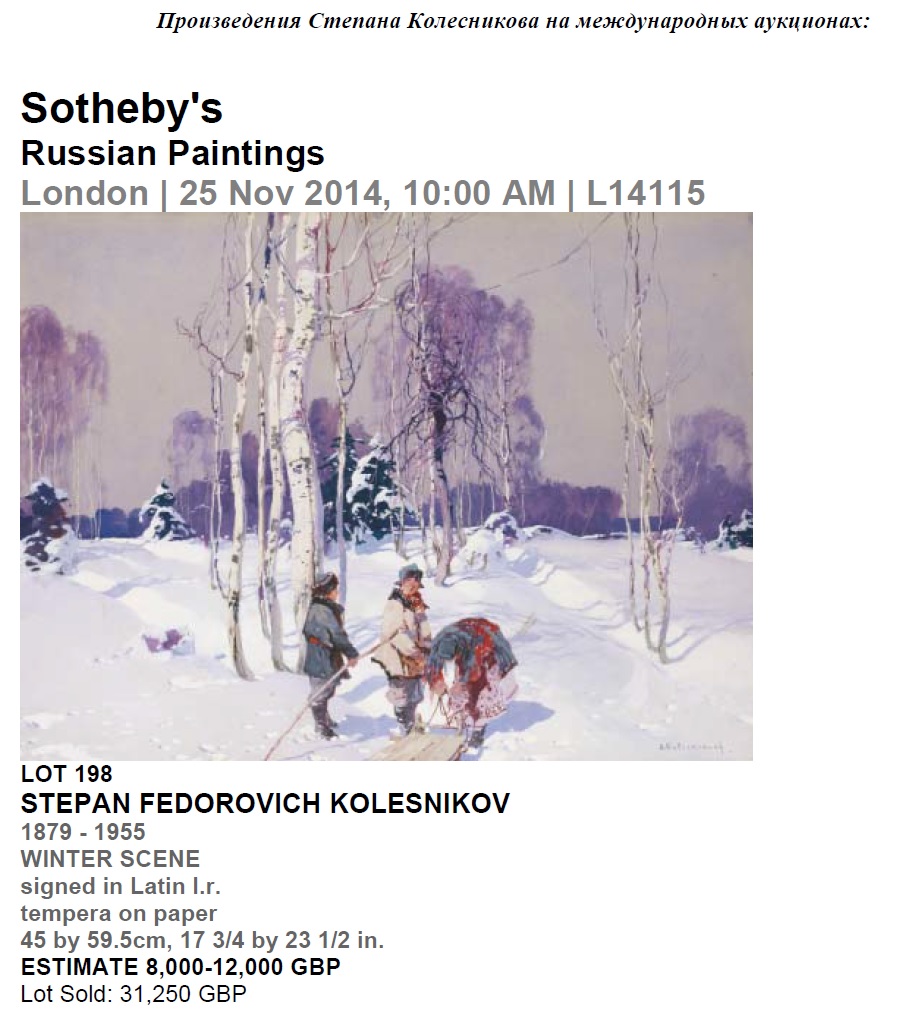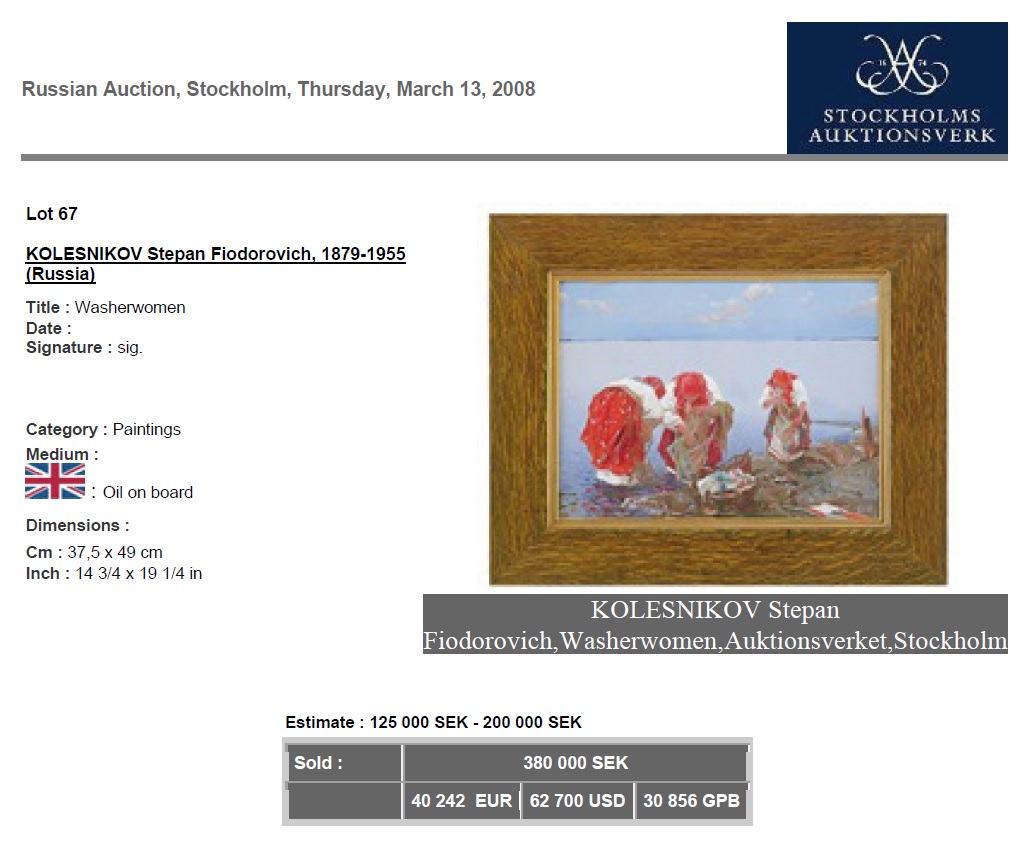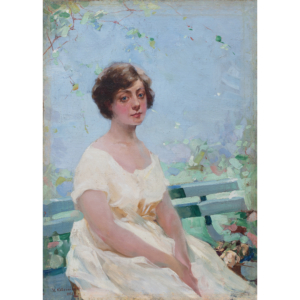KOLESNIKOV (KOLESNIKOFF) STEPAN FEDOROVICH
1879 (Adrianopol, Ekaterinoslav province) — 1955 (Belgrade)
Painter, graphic artist, scene-designer
Stepan Kolesnikov was born to a peasant family. He was brother of the painter I. F. Kolesnikov. In 1897–1903 he studied at Odessa Art School under the guidance of A. A. Popov. He also attended the Higher Art Institute of Painting, Sculpture and Architecture under the Imperial Academy of Arts in 1903–1909. He studied under L. D. Iorini, K. K. Kostandi, and G. A. Ladyzhensky. In 1905 Kolesnikov was awarded the second prize at the spring exhibition in the Imperial Academy of Arts for the painting Spring. In 1909 he conferred title of an artist for the painting “In old estate” and was sent to pensioner trip abroad.
In 1909–1911 Kolesnikov as a pensioner of Imperial Academy of Arts visited Germany, France, and Belgium. He also traveled to Capri, where he met Maxim Gorky. Kolesnikov traveled to the south of Russia; he worked in Bessarabia, Podolsk Carpathians, Balkans, Bulgaria, and Serbia. In 1913 he made a trip aboard a camel through Turkestan and China.
Kolesnikov lived in St. Petersburg. He painted landscapes, portraits, still lifes, genre scenes and battle-scene paintings. The most favorite theme of Kolesnikov’s works in 1910s was south Russian landscape with peoples and animals, scenes of Gypsy life. His works were published in the magazines Niva (“Field”), Ogonek (“Little Fire”) and others. He was also engaged in monumental painting.
Since 1904 Kolesnikov participated in different exhibitions. He exposed his works at the exhibitions of Moscow Society of Art Lovers (1904, 1905, 1908, 1912), the Spring exhibitions of the Imperial Academy of Arts (1905–1909), the Salon of V. A. Izdebsky (1909–1910), the exhibitions of the Society of artists (1912, 1915–1916), the exhibitions of the Society of Travelling Art Exhibitions (TPKhV, 1916–1917), the exhibitions of the Society of South Russian Artists (1918) and many others. Since 1910 Kolesnikov was a member of the group Obshchina Khudozhnikov (“Artist Community”). Several times he was awarded prize of the Society for the Encouragement of Arts (OPKh) in the contest named after A. I. Kuindzhi. In 1912 the first personal exhibition of Kolesnikov was held in halls of the OPKh in St. Petersburg.
In 1919 Kolesnikov immigrated to Belgrade. He taught drawing in the Russian–Serbian gymnasium (1920–1924). Kolesnikov worked as a scene-designer in the People’s Theatre (1921–1926); there he painted plafond of hall (1922). He decorated interiors of the Palace-Hotel (1923), and boardroom of the State Bank. Personal exhibitions of Kolesnikov were held in Belgrade (1921, 1926), in Prague (1926), in Paris (1927) and in Brussels (1928).
Till 1930s works of Kolesnikov were also exposed at the exhibitions in Soviet Russia: the First Kozmodemyansk exhibition of painting, sketches and drawings (1920), the 4th exhibition of paintings of modern Russian painters in Feodosia (1928).
Works by Stepan Kolesnikov are in many museum collections, including the State Tretyakov Gallery, the State Russian Museum, the Pushkin State Museum of Fine Arts, the Research Museum of the Russian Academy of Arts in St. Petersburg, Odessa Fine Arts Museum and others.
